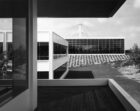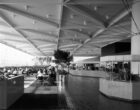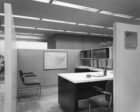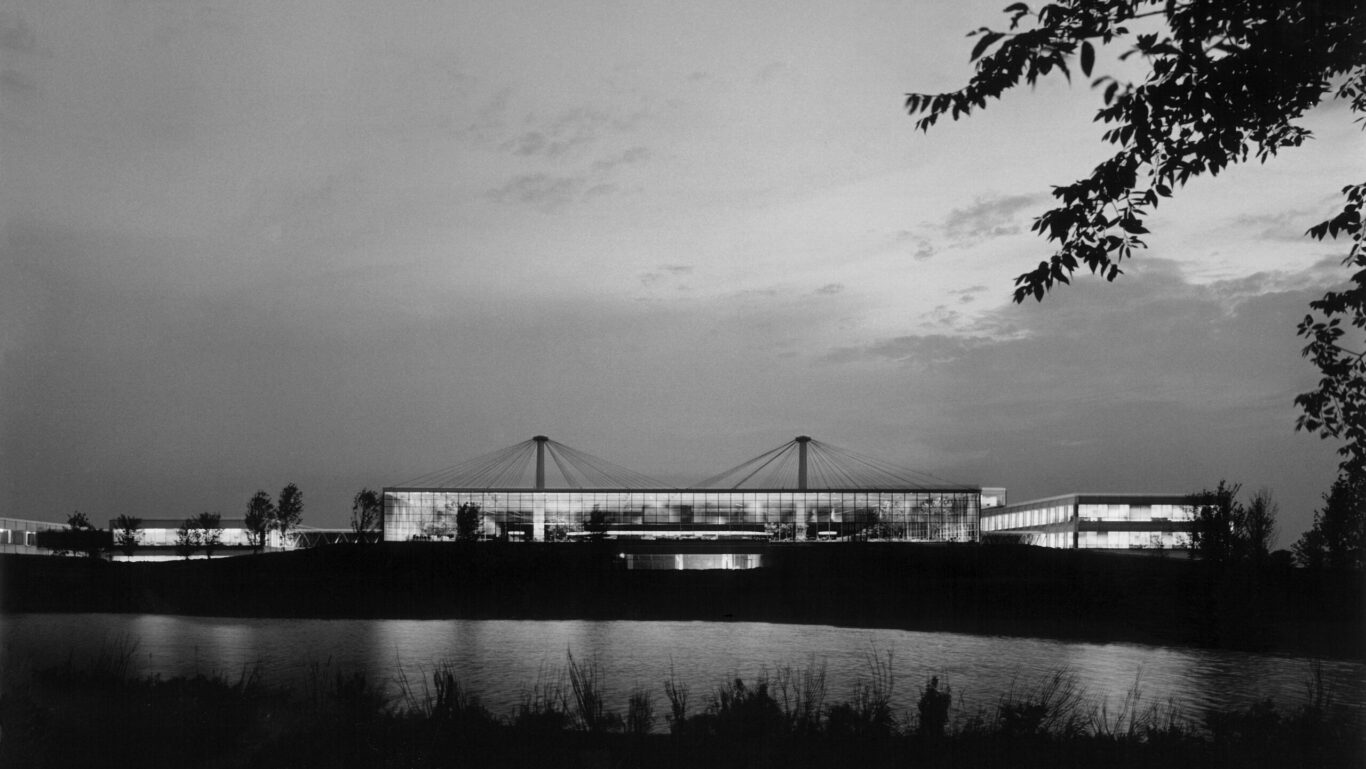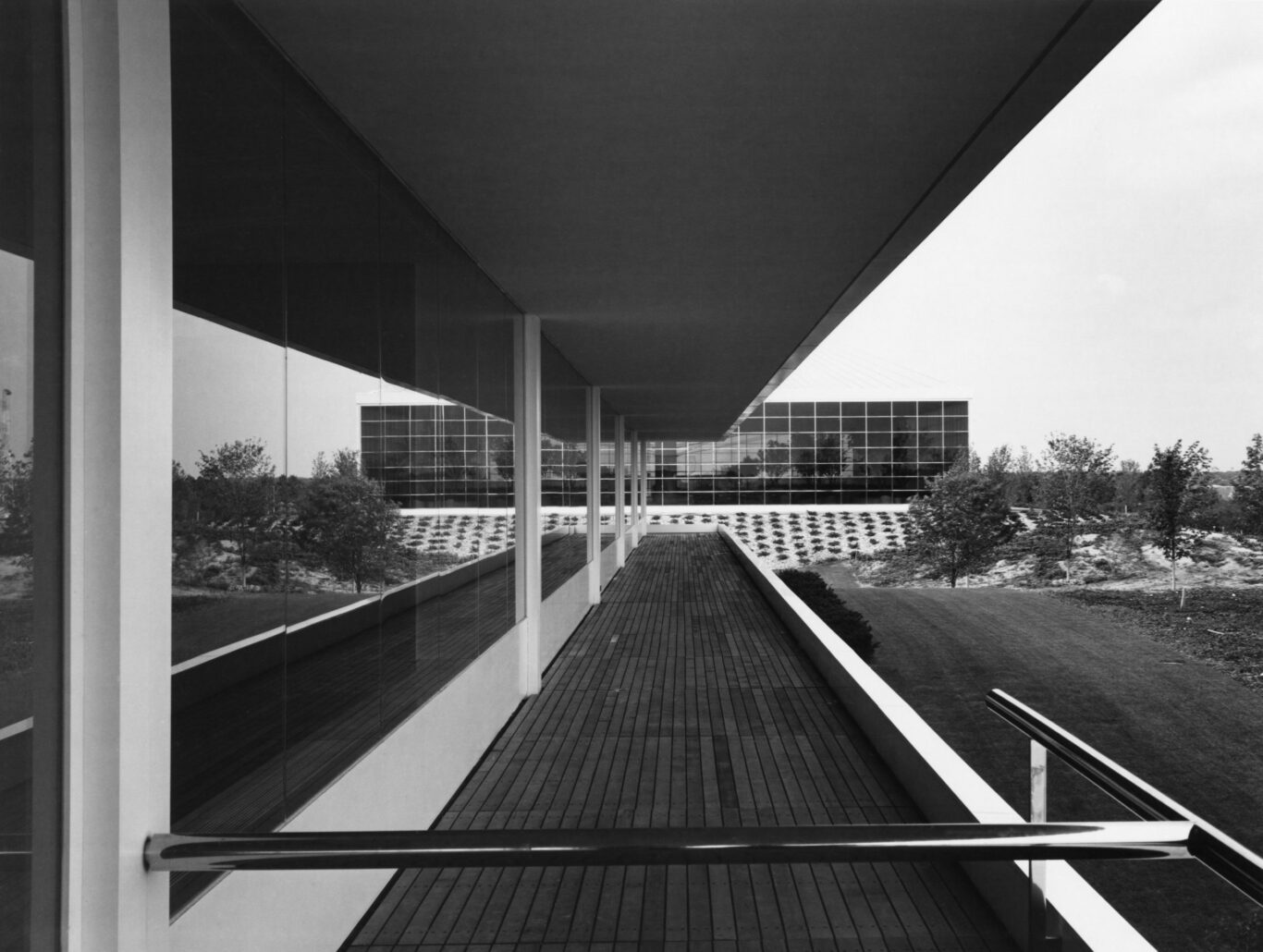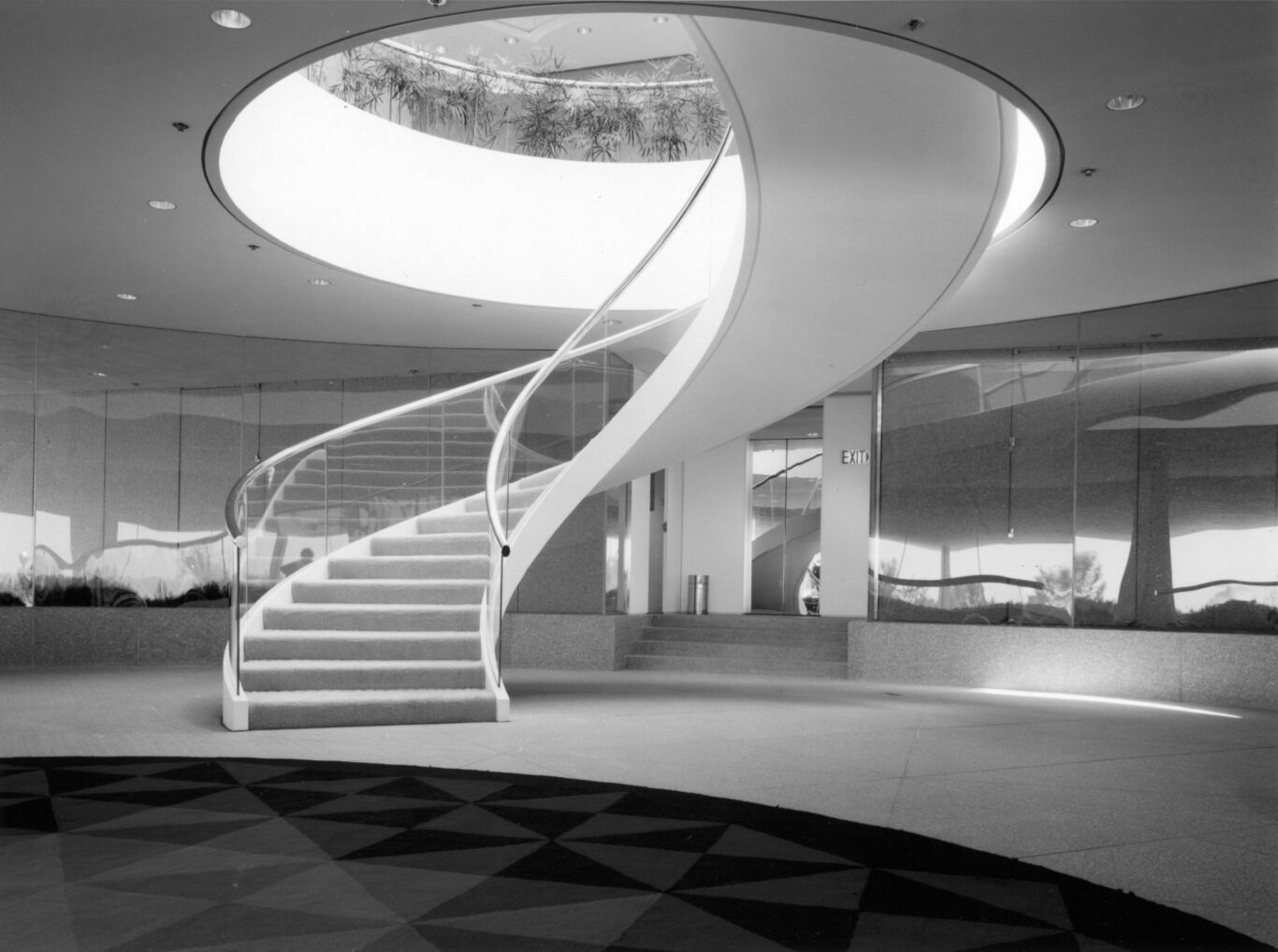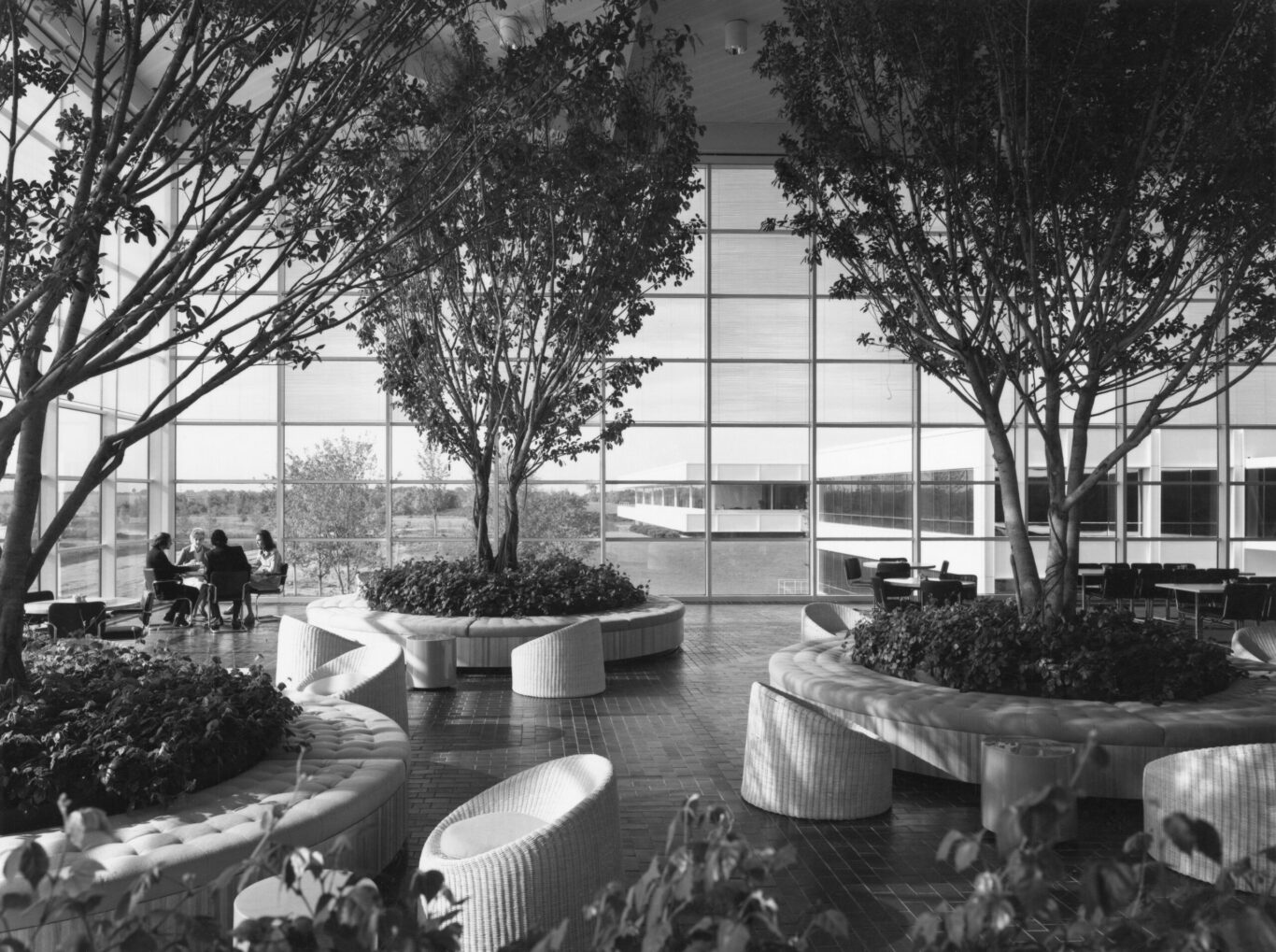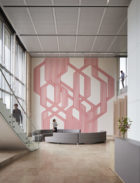A forward-looking workplace
The 1-million-square-foot headquarters of Baxter Travenol (now Baxter International) was designed to provide a flexible framework in which a pharmaceutical industry leader could continue to innovate and expand. SOM’s master plan for the 179-acre site called for a cluster of highly flexible, two- and three-story modular office pavilions that could expand outward from its signature Central Facilities Building. This iconic campus center is characterized by its cable-stayed roof, featuring twin masts that are visible from a nearby expressway as a regional landmark. At once experimental and pragmatic, the suspension-bridge-like structure provides column-free interiors for the cafeteria, auditorium, and training center, which are still in use today.

The first phase, which was designed in 1972 and completed in 1975, also included four typical office pavilions, as well as an executive pavilion, and two parking garages, all sited in a rolling landscape. Respectful of the bucolic site, the plan conceals the parking structures while a ring of man-made ponds serve both to soften the perimeter of the sprawling property and to mitigate flooding. The landscaping also affords expansive vistas for employees, as many of the workspaces are oriented towards outward-facing windows.
In the plains of Illinois, the idea behind Baxter was buildings that expand as nature expands and a master plan that would be complete at each stage of expansion. The central building was intended as a building not for management, but for employees as a symbol of their endeavors.

